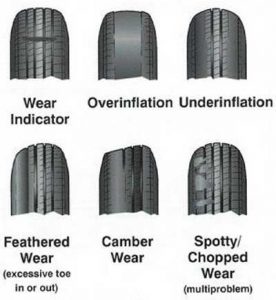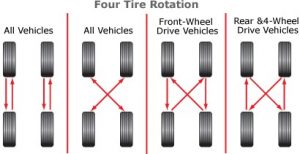As men, we hold the responsibility to take care of our vehicles. Tire care is a big part of that. It’s all too often that we find ourselves being lazy with preventative maintenance or we hire someone to do it for us. MING is dedicated to bringing men back to the basics. We’re going to cover some of those necessary steps to keep your ride on the road for many miles to come! Tire care and maintenance is an important part of preventative maintenance and can affect many different factors. Let’s dive in.
“Tire care??”
Right, and they carry far more than you might imagine. Do you know that tires can influence and tell you several things about your vehicle? First and foremost, the fuel economy is something desired across the board by all drivers on the road today. Improperly inflated tires can be detrimental to those MPG’s (miles per gallon) and wallet. Treadwear patterns can also tell you about the condition of your vehicle’s suspension system. It may be time for you to replace some of those vital suspension items such as ball joints or control arm bushings. Lastly, poor tire care can lead to premature failure which can cause other unnecessary damage to your car or an accident, causing injury (or worse).
Lets talk wear
As stated above, your wear patterns can tell you quite a bit of information about your car. Looking at this chart below :

Wear Indicator – Tire has reached its service life and needs to be replaced. If worn evenly, there usually is no problems with vehicle’s chassis/suspension components.
Overinflation/Underinflation – Tire inflation is very important. Tires not inflated to the proper air pressure can cause premature wear and even tire failure. It’s important to check your tire pressure periodically to ensure they last you for their rated lifespan.
Feathered/Camber Wear – Tires showing these wear patterns usually signify an issue with chassis components. The vehicle will, at a minimum, need an alignment performed and more than likely, it will be time to replace several items.
Spotty/Chopped Wear – You might have a multitude of problems going on. An item such as wheel bearings could be loose or be going bad. This could even signal a problem with the tire such an internal belt failure inside the tire.
So what about tire rotating?
Tire rotation is an important part of getting your money’s worth from a set of rubber. Failing to do this can wear out two of your tires well under the halfway mark of their rated life. Your vehicle’s owner manual should have how often you should rotate your tires. If you don’t have your paperwork, don’t worry. A quick online search can usually yield the desired result, or by the rule of thumb – rotate your tires every six months or 6,000 miles. It is of my personal opinion that as long as you’re consistent with your rotation schedule, you can go upwards of 10,000 miles. Depending on the amount of driving you do, at least make this happen once a year. Now there are different ways to rotate tires depending on your vehicle setup. Let’s look at the chart below.

I am a fan of the cross-rotating patterns. Depending upon whether your vehicle is a front or rear-wheel drive, you’ll see the crossing pattern differs as your moving tires front to rear and vice versa. If you are doing your own tire rotations, I cannot stress the importance of using jack-stands. These prevent a vehicle from falling should your jack slip or fail. The life you save may be your own! Make sure you tighten all your lug nuts in a crossing sequence and check after a short drive to ensure they’re tight. You wouldn’t want your lug nuts to back off and leave you stranded (personally speaking)!







